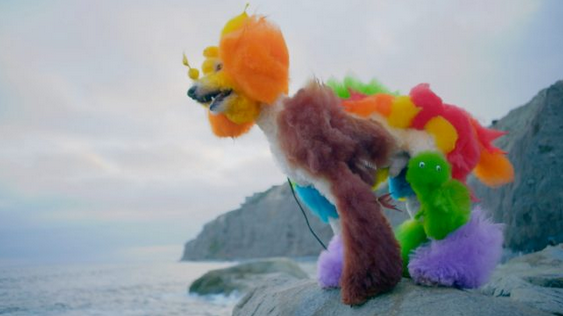
Hey film fans, the MdFF is back, back, back again, May 8-12, with another great lineup. Here are some reviews to whet your appetite.
Well Groomed
4 stars
I have a theory that, assuming their basic human needs are met, everyone is obsessed with something. Maybe it’s scrapbooking. Maybe it’s yoga. Maybe it’s the whacky bedhopping antics of the cast of Vanderpump Rules. The colorful women featured in Rebecca Stern’s delightful new documentary, Well Groomed, are obsessed with dog grooming. But not just any old dog grooming, something called “Creative Grooming,” where poodles are brightly dyed and shaved into kitschy and elaborate works of art. (To give you a sense, some of the grooming concepts featured in the film include Pokemon, mermaids, dinosaurs, and Tim Burton’s Alice in Wonderland.) The film focuses on four women in particular—two old pros, an up-and-coming striver, and a novice. Most of them have legit dog grooming businesses on the side. One, Angela Kumpe, gives workshops on grooming and sells non-toxic dye and stick-on gems so you, too, can “furjazzle” your pup. For these women, creative grooming is their world—an artistic outlet, a source of pride, a way to make friends, and, perhaps most importantly, a competition. Well Groomed has the structure of a Big Game movie. In this case, the Big Game is the Hershey dog grooming competition, referred to as “the Super Bowl of creative grooming.”
But even though these women are competing fiercely against each other, they love and support each other, too. After all, who else can possibly understand the source of their passion? The film gives brief voice to the naysayers—those who think it’s cruel or exploitative to paint and primp these dogs. The women insist the dogs love it—and all the wagging tails, kisses, and proud struts would suggest so. (It’s notable that even at the oh-so-snooty Westminster Dog Show, poodles—with their endlessly sculptable fur— are always subjected to elaborate grooming.) One of the groomers suggests people should take a live-and-let-live approach to her hobby and compares it to being a nudist—nudism is not for her, she notes, but she would never judge someone else who was into it. That being said, the dogs are ridiculous, especially when they’re just being dogs, and Stern has some fun showing hot pink and purple poodles in nature—standing on a craggy rock overlooking a river, romping in a barn, or tussling with other dogs in the dog park. The film has lots of deadpan jokes—“Ironically, I’m allergic to dogs,” sighs the daughter of one of our heroines—but it will also make you cheer and cry. All of this is aided tremendous by a whimsical and joyful score by Baltimore’s own Dan Deacon. Well Groomed makes you care deeply about a pastime you’ve probably never heard of and people you’ve never met. And that, folks, is what great film is all about.
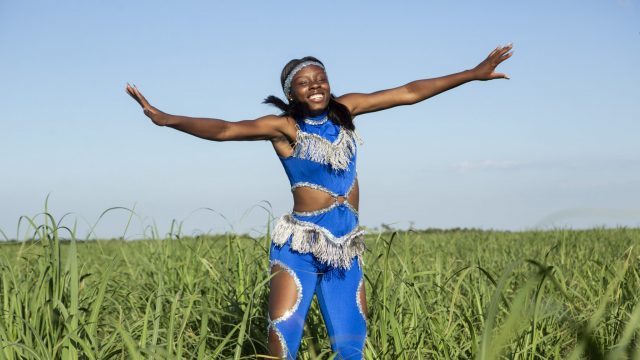
Pahokee
3 stars
One of the reasons there are so many films and TV shows about high school is because the rituals have built in drama: There’s homecoming and the big game and prom, not to mention dealing with your parents and the pressure of getting into college. And no matter where you live, these rituals are more or less the same, although in some communities, they might take on more urgency than in others. In the documentary, Pahokee, set in the rural farming town of Pahokee, FL, these events take place against a backdrop of poverty and familial sacrifice. Directors Patrick Breson and Ivete Lucas essentially park their cameras in the hallways, cafeterias, playing fields, places of work, and shack-like home of their subjects, and let us watch as the year unfolds. They focus on four kids, Na’Kerria Nelson, who’s campaigning hard for homecoming queen and who just wants to get the heck out of Pahokee; Jocabed Martinez, a dutiful daughter, the school’s salutatorian, who works at her family’s taco joint and gets emotional when she reflects on all her parents have done for her; BJ Crawford, an offensive lineman on the high school’s excellent football team who wants to go to a Division I college; and Junior Walker, a talented drum major and skateboarder who is raising his one-year-old daughter on his own. In Pahokee, as is the case in many small towns, the football team is the center of community life, with the unique ability to raise the spirits of the entire town after a victory. It’s particularly fun to watch the Pahokee team play, partly because they are so good, but partly because the cheerleaders, step dancers, and marching band that support them are so wildly talented. The film is quite entertaining, and often more hopeful than sad, although at times the extreme cinema verite style can be a bit frustrating. I had questions that were never addressed: Why is BJ raising his daughter? What’s the deal with the pretty girl in the wheelchair who gets a prom invite from that handsome jock? What happened in the aftermath of an Easter Egg hunt disrupted by gunfire? (That scene, by the way, shows the fortitude of Breson and Lucas; they don’t run from the bullets but keep their cameras focused on scrambling young men and mothers frantically falling on their their children as they urge them to “get down.”) All in all, the film is an excellent portrait of a town fueled by collective dreams of living elsewhere.
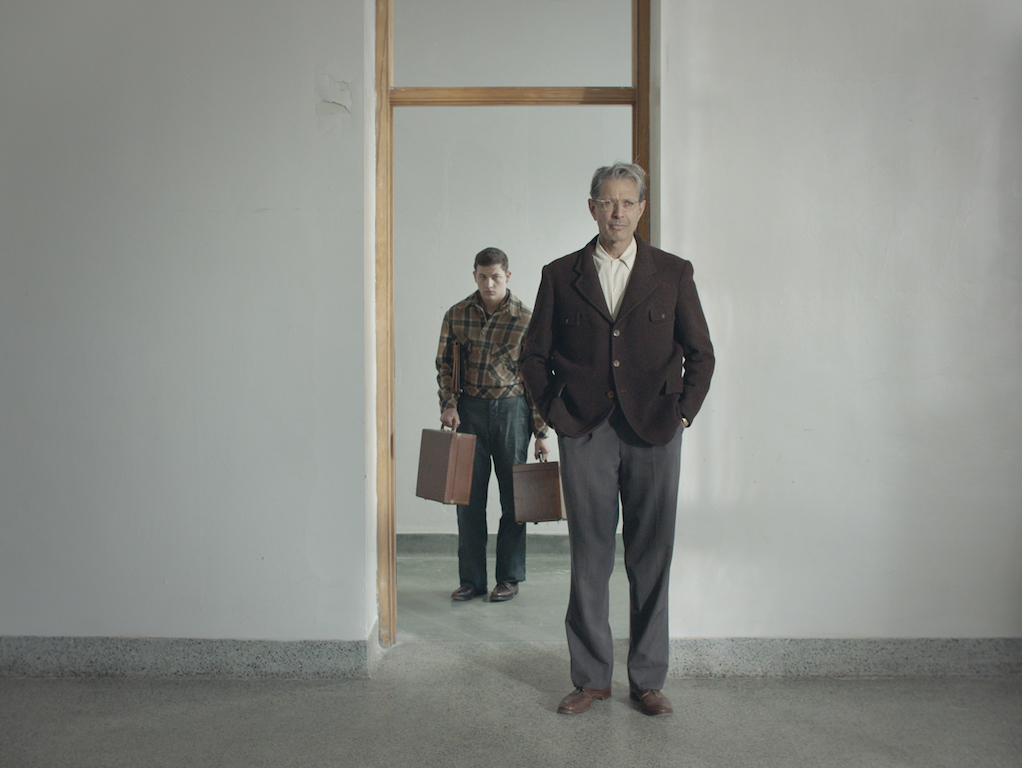
The Mountain
2.5 stars
Picture an early Yorgos Lanthimos film slowed down to about half speed and you have at least a basic sense of Rick Alverson’s The Mountain. It’s a strange, idiosyncratic film, not for all tastes (certainly not for mine) but its own brand of pretentious arthouse creepiness might work on you. I will say that its visuals—painstakingly composed, mostly monochromatic images shot in desaturated whites and greys—are undeniably arresting. The film takes place in the early 1960s. Our hero is a stolid and largely taciturn young man named Andy (Tye Sheridan) who works as a Zamboni driver at the ice rink owned by his father (Udo Kier). His mother, we find out, is out of the picture, a captive patient at a mental institution.
Through a series of events I won’t spoil here, Andy ends up becoming the photographer for the courtly Dr. Wallace Fiennes (Jeff Goldblum, basically giving us Jeff Goldblum slowed down to half speed) who travels from hospital to hospital performing lobotomies. The scenes at the mental hospitals are straight from the One Flew Over the Cuckoo’s Nest playbook—lots of patients in white staring into space, howling like monkeys, or banging their heads against a wall. Of course, as we watch this play out, we worry for Andy: Will he, too, fall under Fiennes’ eager knife? This would be an absolutely chilling prospect if Andy had any sort of personality that could be lobotomized, or if the film even took a stance one way or the other on the controversial (and now outlawed) procedure. (All the characters walk around in such a trance, it’s hard to distinguish between the befores and afters.) The film really lost me by its third act when Denis Lavant (!) showed up as the father of a would-be female patient, who also becomes something of a romantic interest for Andy. By the time Lavant goes on a semi-nonsensical monologue in French about hermaphrodites (another persistent, if mystifying, recurring image in the film), I had pretty much checked out. Maybe you’ll have more patience than I did.
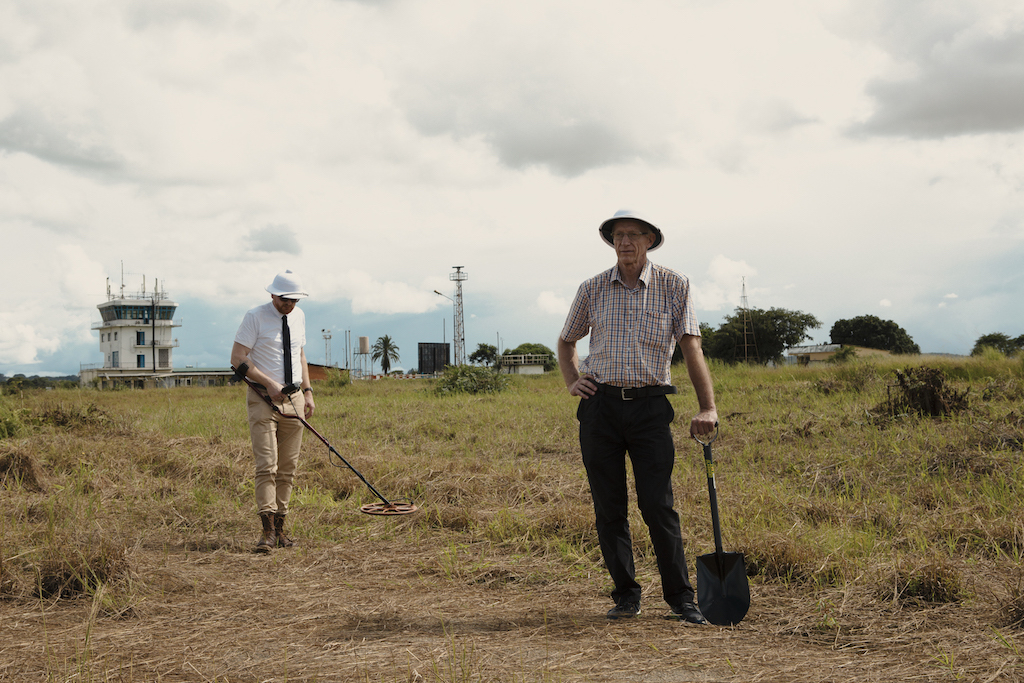
Cold Case Hammarskjöld
3.5 stars
Cold Case Hammarskjöld manages to perform two sleights of hand. The first is keeping me interested in a nearly 60 year old mystery about the death of the Swedish UN General Secretary Dag Hammarskjöld, whose plane crashed under suspicious circumstances in Zambia. I literally had a Venti coffee perched on my desk as I launched into the screener, but it turned out to be completely unnecessary. Director Mads Brügger—picture a cross between Louis CK and Moby—adopts a jaunty, stylized, hyper-meta tone to keep audiences engaged as he searches for the truth. But even he admits that the documentary is a bit of a lark, an opportunity for cosplay (he dresses in the white safari-style garb of his suspected supervillain), travel, and adventure. But the second half of the film takes a rather startling turn, and suddenly we’re dealing with a racist global conspiracy almost too sickening to contemplate. The film delivers a gut punch that I never saw coming.
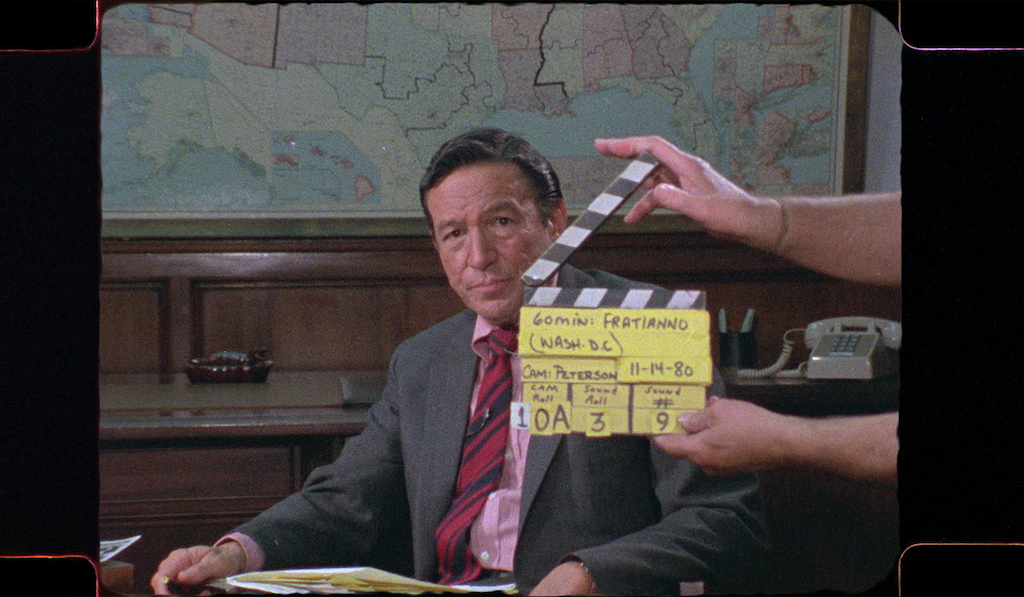
Mike Wallace is Here
3 stars
Avi Belkin’s documentary on the notoriously pugnacious 60 Minutes interviewer starts on a curious note: It runs footage of Wallace interviewing former Fox News host Bill O’Reilly. In the clip, O’Reilly essentially credits—or blames, if you prefer—Wallace with creating the kind of confrontational news interrogation that Fox specializes in. “I’m your son,” he says ominously. From there, the film chronicles Wallace’s fascinating broadcast life and uniquely brash style in a clever way, alternating between Wallace interviewing subjects—Arthur Miller, Barbra Streisand, famously the Ayatollah Khomeini—and being interviewed himself. (Once 60 Minutes became a huge hit, he was a subject of endless fascination.) While giving interviews, Wallace was direct, on-the-ball, pointed. But when the tables were turned, he hemmed and hawed, often dodging the very kinds of questions he asked himself. What emerges is a compelling portrait of a game-changing journalist, who battled personal demons (including the death of his eldest son and almost crippling depression), but never had a political agenda to promote and never shied away from the truth.
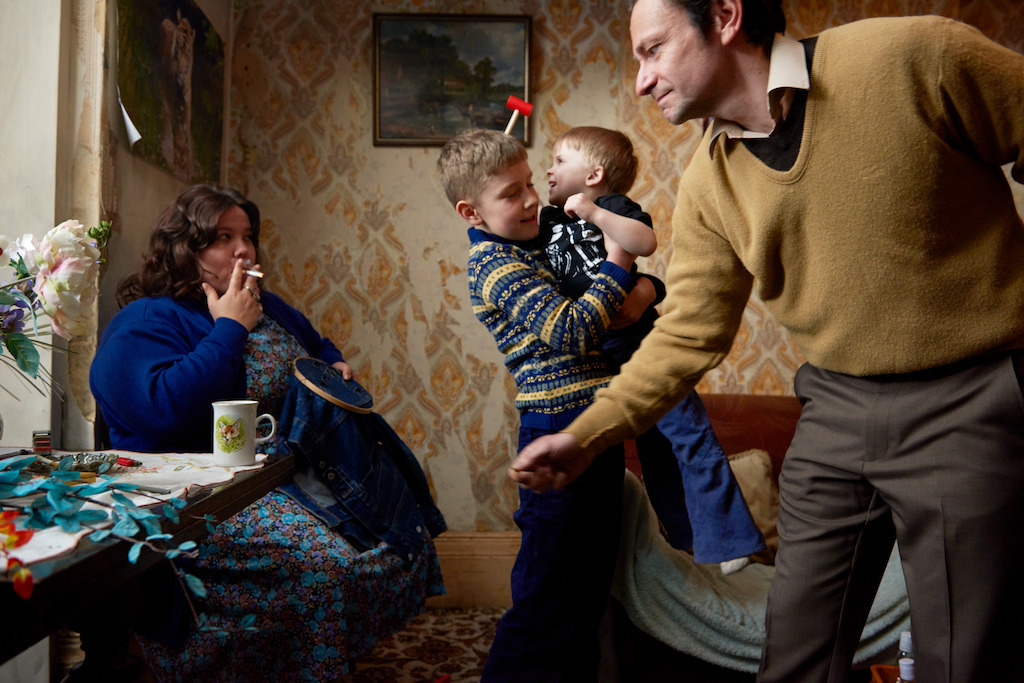
Ray & Liz
3 stars
Quiet lives of desperation are depicted with unflinching honesty in British photographer Richard Billingham’s semi-autobiographical debut film. Jumping a bit through time, he first shows us the elderly Ray (a stand-in for his own father), living in a one-room flat, wasting away in bed all day, visited only by the occasional roach and a neighbor who supplies him with jugs of alcohol. Flashing back to the early 80s, we see Ray and his chain-smoking wife Liz raising two sons in a joyless, grimy home. Little Jason, at first just a neglected toddler; later a curious and empathic little boy who loves animals, is all but ignored by his parents, who do little more than sleep, drink, and smoke. His older brother counts the days until he can leave home. The settings are vivid—dingy lace curtains, peeling wallpaper, a chest of dusty curios—and Billingham frames each ugly-beautiful scene with a keen and empathic eye. For fans of slow cinema, still photography, and social realism, Ray & Liz is as depressing as it is ultimately rewarding.
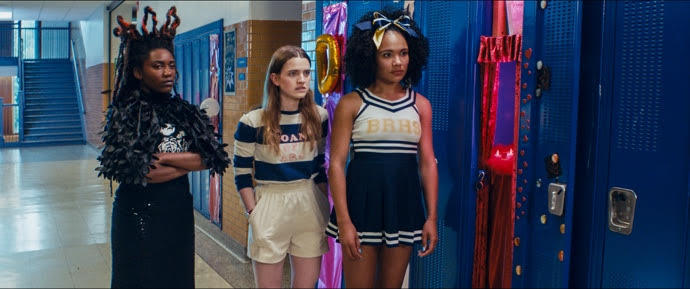
Knives and Skin
3 stars
A teenage drum majorette is missing and presumed dead, sending shockwaves through a small town. With its gallows humor, nods to surrealism, and haunting synth score, Jennifer Reeder’s Knives and Skin draws inevitable comparisons to Twin Peaks, an obvious influence. But in some ways, this film is the antithesis of—or perhaps even a direct response to—the “dead girl in the woods” genre, as the teenage female characters here take center stage and have agency over their own lives. One sells her mother’s panties to a horny teacher; another is coming into her own as a lesbian; a third wears elaborate face paint and headpieces to school. (The fact that the two of the main three protagonists are black is simply a nice, not-fussed-over detail). The adults in the town are mostly messes, albeit some more well intentioned than others. The mother of the missing girl, the school’s choral coach, walks around in a daze and, in one disturbing scene, seduces the young man who was the last person to see her daughter. A “cool guy” teacher lures one of his pupils to his apartment. Another mother spends most of her day in bed. At times, I think the film leans too hard into the “quiet lives of desperation in suburbia” trope and the songs the chorus sings—dirge-like version of 80s New Wave hits—while undeniably cool, don’t make much thematic sense. Still, this is a feminist and refreshing take on a high school drama. Laura Palmer would approve.
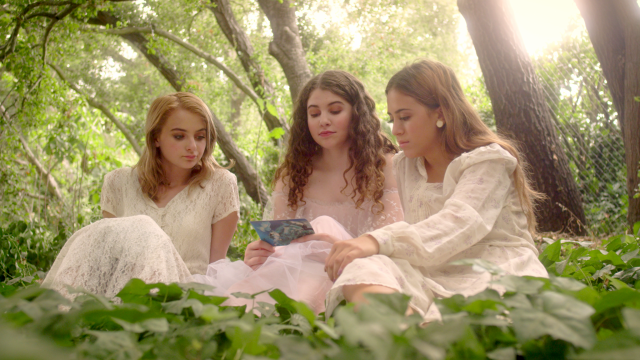
Ham on Rye
3 stars
The Twilight Zone meets Dazed and Confused in this funny, unsettling film from newcomer Tylor Taormina. As the film starts, a bunch of teenagers, many dressed up as though for prom, make their way to the neighborhood sandwich joint, Monty’s. For most, the pilgrimage is filled with giddy, jangly, hormonal teenage nerves and typical high school banter, but there is a creeping dread that washes over the proceedings as well. One girl, Haley (Haley Bodell), expresses concern about where they are going. Another boy freezes up completely and has a panic attack. The camera drifts from one group to the next—a boy on crutches, a boy in a too-big suit, three girls making a point to arrive fashionably late. But why is this event happening in broad daylight? And why does the burger flipper at Monty’s look so worried? Ham on Rye’s best quality is the absolute naturalism of the kids—we really feel like we’re drifting in and out of their random, often amusing conversations. (One boy proposes a theory that “porking” is the ultimate human activity; his friend counters that emergency room doctors serve a greater purpose.) What the film is actually driving at is a little less clear, although I think Taormina is saying something the sheep-like way we adhere to systems and about teenage conformity, in particular. When you’re 16, you follow the crowd, no matter where it takes you. But FOMO, it seems, has consequences.
For showtimes and information on other films playing the fest go here!
